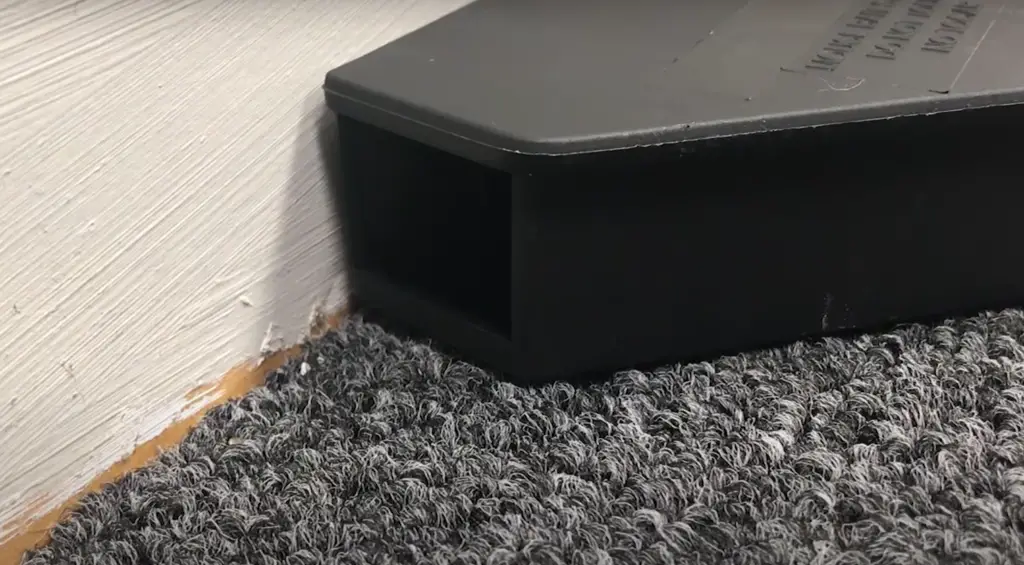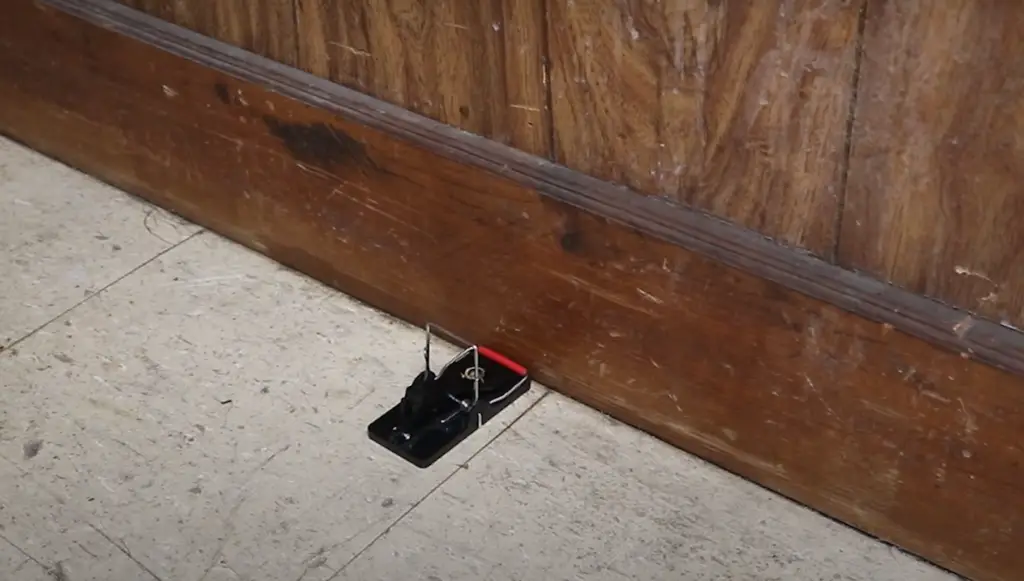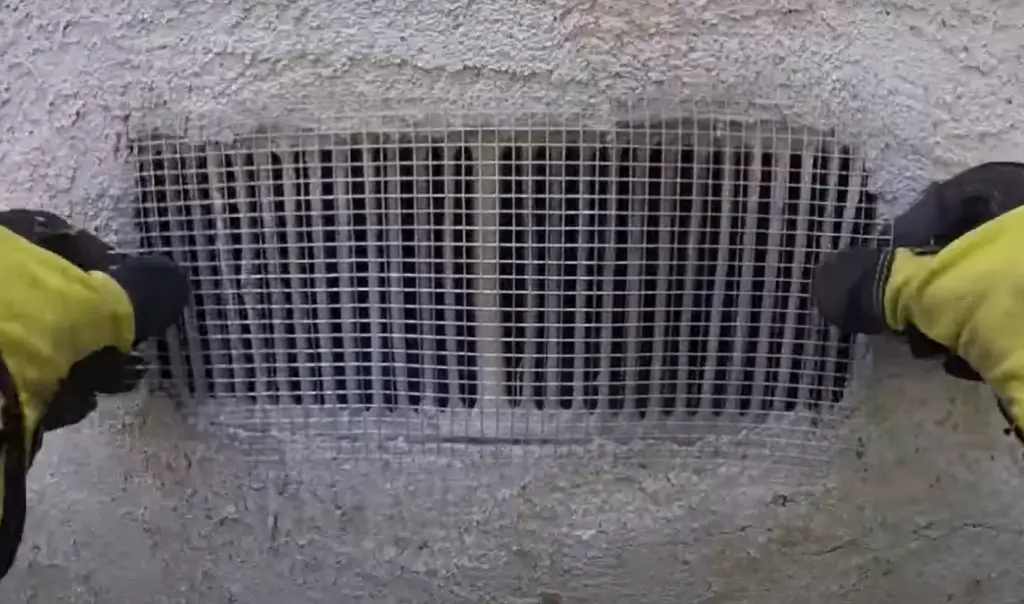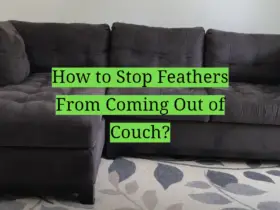Mice can be a huge problem in any home. Not only are they a health hazard, but they can also cause extensive damage to your property. If you have been noticing signs of mice in your house, it is important to take action right away. In this blog post, we will discuss how to find where the mice are coming into your house and how to stop them from causing further damage!
Damages Mice Cause to Your Home
Once you have found where the mice are coming into your house, it is time to take action and stop them.
Mice can also be a serious health concern if you have children or pets. [1]
How Do Mice Get Inside?
Mice are fantastic at breaking into houses and other structures. They can squeeze through tiny openings, cracks, and holes.

Once they are inside, they will build their nests close to food sources and where there is shelter. If you have seen a mouse in your home, it is likely that there are more. Mice reproduce quickly and can have litters of up to 12 young. [2]
What Can You Do To Keep Mice Out Of Your House?
Mice may get in despite your best efforts to keep them out, so there are certain things you can do to prevent mice from entering your home. These include:
- Make sure to seal up any cracks or holes on the exterior of your house, particularly around doors and windows.
- Keep food in sealed containers and clean up any crumbs or spills right away.
- Remove any clutter, including newspapers and boxes, that mice could use for nesting.
- Set mouse traps throughout your home, particularly in areas where you’ve seen evidence of mice activity. Check the traps regularly and dispose of any captured mice immediately.
If you already have a mouse problem, there are a few things you can do to get rid of them. First, try using sticky traps or snap traps baited with cheese or peanut butter. These can be effective in catching individual mice. If you have a lot of mice, however, you may need to resort to poisons or other stronger methods. [3]
How to Check for Mice Entry Points Before They Get In
Before you start looking for mice entry points, it is important to do some basic preparation. First, clear away any clutter around the perimeter of your home, both inside and out. This will give you a clear view of potential access points. You should also repair any cracks or holes in your foundation or exterior walls.

Mice can squeeze through very small openings, so it is important to make sure there are no potential entrances for them. Finally, set up some mouse traps around the perimeter of your property to help catch any mice that may be trying to enter.
Signs of rodents in the area
Tracks and footprints
Mice leave behind tracks in the dust or mud. You may also see their footprints on surfaces like countertops or tables.
Droppings
Mice droppings are small, dark, and have a pointed shape. They are usually found near food sources or nesting areas.
Gnaw marks
Mice gnaw on wood and other materials to create nesting material or to get into food sources. Gnaw marks are usually rough and jagged.
Scratching noises
You may hear mice scratching inside walls or floors if they are present in your home.
Burrows
Look for small dirt piles near the foundation of your home. Mice will often create burrows as an entrance to their nest.
Grease marks
Check for grease marks along the baseboards and walls of your home. Mice will often leave grease behind as they travel along these surfaces.
Urine stains
Mice will also urinate as they travel, so look for small urine stains on surfaces in your home.

If you see any of these signs, there’s a good chance you have mice! [4]
Common Mice Entry Points
Foundations and walls
Any hole larger than a nickel may be used by mice to enter your home. Check your basement foundation and walls for cracks, then caulk or seal them.
Doors and windows
Inspect weather-stripping around doors and windows, repairing it as necessary. Look for gaps where the door meets the frame, and fill them with Door Sweep Foam Tape or another type of sealant.
Vents and chimneys
Screening over vents and openings to chimneys will keep mice from crawling in.
Holes around pipes
Small openings around pipes may allow mice (and other vermin) to enter your house.  Use caulk or expanding foam to seal these gaps.
Use caulk or expanding foam to seal these gaps.
Attics and crawl spaces
Make sure that any vents in your attic or crawl space are screened, and that there are no gaps leading into your home.
Garage door seals
These are one of the most common places where mice enter a home. To check your garage door seals, simply look at the bottom of your garage door.
To fix this issue, you can either replace the seal or fill the gaps with caulk.
Roof vents
Mice can also enter your home through the roof vents. To check these, simply go into your attic and look for any holes or gaps. If you detect any, you’ll need to fill them with caulk or steel wool.
Sinks and toilets
It is another place where mice like to hide. Check these areas for droppings and holes. If you find any, seal them up with steel wool or caulking.
Sheds
Mice can also enter your property through any gaps in your shed.

Check these areas for holes and seal them up with steel wool or caulking.
Outdoor trash cans
Mice are attracted to the smell of food in outdoor trash cans. Make sure these are sealed tight and not accessible to mice.
Cable holes
Cable holes, cracks in the foundation, vents, and gaps around doors are all potential entry points for mice. To figure out where they’re coming in, set up a mouse trap near each of these potential openings. Once you catch a mouse, look for signs of other mice nearby. You can also try setting up a live trap to see where the mouse is coming from. If you have pets, make sure to put the trap high enough so they can’t reach it. Once you’ve found the entry point, seal it off with caulk or steel wool to keep other mice from getting in. [5]
How to Block Mice Entry Points?
If you want to keep mice out of your home, you need to block their entry points. Mice can squeeze through tiny openings, so it’s important to check for holes both inside and outside your home. Once you’ve found all the potential entry points, seal them up with caulk or steel wool. You should also remove any food sources that might attract mice, such as unsecured garbage cans or pet food bowls. If you take these steps, you’ll be well on your way to keeping mice out of your house for good. [6]
Getting Rid Of Mice Is A Challenge: Why Is That?
If you have ever had the misfortune of dealing with a mouse infestation, you know how challenging it can be to get rid of them. There are a number of reasons why mice are so difficult to get rid of, but the most important one is that they reproduce very quickly.
So, if you have just a few mice in your house, it won’t take long for their numbers to explode.

Another reason why mice are so difficult to get rid of is that they are extremely good at hiding. They will build their nests in small spaces that are out of sight and hard to reach. This makes it difficult to find them and get rid of them. Additionally, mice are very good at finding food. They can squeeze into tiny spaces to get into your pantry or cupboards, and they will eat just about anything. [7]
Comparison of Indicators for Finding Mouse Entry Points in Houses
Mice can find their way into homes through tiny gaps and cracks. To prevent a mouse infestation, it’s important to identify these entry points and seal them up. This table compares different indicators that can be used to locate mouse entry points in houses.
| Indicator | Effectiveness | Cost | Difficulty |
|---|---|---|---|
| Visual inspection | High | Low | Easy |
| Blacklight | Moderate | Medium | Medium |
| Fluorescent powder | High | Low | Easy |
| Track pads | High | Low | Easy |
| Ultrasonic detectors | Low | High | Easy |
| Scent detection | Moderate | Low | Medium |
The table compares six different indicators that can be used to find mouse entry points in houses: visual inspection, blacklight, fluorescent powder, track pads, ultrasonic detectors, and scent detection. Each indicator is evaluated based on three criteria: effectiveness, cost, and difficulty.
Visual inspection is the most effective and easiest method, but it may not identify all entry points. Blacklight and fluorescent powder are moderately effective but require some skill and equipment. Track pads are highly effective and easy to use but may not be suitable for all surfaces. Ultrasonic detectors are relatively ineffective and expensive. Scent detection is moderately effective but requires some skill to interpret.
Overall, visual inspection and track pads are the most effective and easiest methods for finding mouse entry points in houses, while ultrasonic detectors are the least effective and most expensive.
FAQ
Why are there mice in my house all of a sudden?
Mice are looking for food and shelter just like any other animal. If they find an opening into your home, they will take advantage of it. Check your home for any cracks or holes that could be letting them in and seal them up with caulk or steel wool.
What do I do if I find a mouse in my house?
If you see a mouse in your house, try to keep calm and don’t let it escape. Gather some supplies like a broom, dustpan, rubber gloves, and a trash can. Then follow these steps:
- Approach the mouse slowly so you don’t scare it.
- Sweep the mouse into the dustpan.
- Carefully dump the mouse into the trash can.
- Wash your hands thoroughly.
Where do mice like to hide in your house?
Mice are attracted to food and warmth, so they will usually try to find a way into your house through any opening they can fit through. Once they’re inside, they’ll build their nests in dark, secluded places like behind cabinets, in crawl spaces, or in the attic. To figure out where mice are getting into your home, start by doing a thorough inspection of the exterior of your house. Look for any cracks or openings that could be potential entry points for mice. Pay special attention to areas around utility pipes and wires since these are common places for mice to squeeze through.
Once you’ve located all possible entry points, block them off with steel wool or caulk to keep mice from coming inside. You can also set up mouse traps around these areas to help catch any mice that are already inside your house. If you have a large mouse infestation, you’ll need to call in a professional pest control firm to assist get rid of the mice.
When you don’t know where the mice are coming from, how do you get rid of them?
First, you need to do some detective work. Look for mouse droppings and try to follow them back to the point of entry. Once you’ve found where they’re getting in, seal up the opening with steel wool or caulk.
If that doesn’t work, you may need to set a mousetrap. The best kind of trap is a live trap, which will capture the mouse without harming it. Then you can release it far away from your home.
You may also want to try using a natural repellent like peppermint oil or cayenne pepper. Just be sure to keep these out of reach of children and pets.
With a little patience and perseverance, you can get rid of those pesky mice for good!
How do you detect a mouse nest in your home?
There are a few things you can look for to see if mice are nesting in your home. One of the most obvious signs is droppings. Mice leave behind small, black pellets that are about the size of a grain of rice. You may also find mouse nests made out of shredded paper or fabric. If you see either of these signs, it’s time to start looking for ways to get rid of them.
One way to get rid of mice is to set traps. These can be purchased at most hardware or home improvement stores and come in a variety of shapes and sizes. Some people prefer snap traps, while others use live traps so they can release the mouse outside. No matter what type of trap you choose, be sure to bait it with something that mice like to eat, such as peanut butter or cheese.
Another way to get rid of mice is to use poison. This should be done with caution, however, as poison can be dangerous to pets and children. If you decide to go this route, be sure to follow the directions on the package carefully and keep the poison out of reach of kids and animals.
You can also try deterring mice by making your home less inviting to them. Seal up any cracks or holes that they might be using to get inside and clean up any food crumbs that they might be attracted to.
Do two mice imply an infestation?
Mice are social creatures, so if you see one mouse, there’s a good chance there are more. If you’re hearing noises in your walls or attic or seeing droppings around your home, it’s time to take action. But how do you find where mice are coming into your house? And once you know where they’re getting in, how do you stop them?
Here are a few tips:
- Inspect the outside of your home for any cracks or holes that could be serving as an entry point for mice. Pay special attention to areas around utility pipes and wires, as these provide easy access to your home.
- Once you’ve identified potential entry points, set up some mouse traps baited with cheese or peanut butter. This will help you determine which areas are active with mice.
- If you’re still having trouble pinpointing where the mice are getting in, try using baby powder or flour around suspected entry points. Mice leave footprints as they travel, so this can be a helpful way to track their movements and find the source of the problem.
Once you’ve found where the mice are coming into your house, take steps to plug up those holes with steel wool or caulk. This will help keep them out for good!
What is the best mouse repellent?
There are a few things you can do to try and figure out where the mice are coming into your house. You can start by doing a thorough inspection of the exterior of your home, looking for any potential openings that they could be using. Once you’ve found the likely entry points, you can then take steps to seal them off so the mice can’t get in.
As for what is the best mouse repellent, there are a few different options available. You can use ultrasonic devices which emit high-frequency sound waves that deter mice (and other pests). There are also natural repellents made from ingredients like peppermint oil or cayenne pepper that can help keep them away. Whichever option you choose, make sure to follow the manufacturer’s instructions carefully to ensure safe and effective use.
How do you know when all the mice have been exterminated? How do you keep them from coming back?
You may think that finding where mice are coming into your house is as simple as setting a few traps, but it’s actually a little more complicated than that. Mice are very good at squeezing through tiny spaces, so they can get into your home even if there are no obvious openings. That’s why it’s important to inspect the exterior of your home and seal up any cracks or holes you find. Once you’ve done that, set some traps inside your home and check them regularly. If you catch any mice, dispose of them immediately so they can’t reproduce and create more problems for you.
If you’re still having trouble getting rid of all the mice in your home, call a professional exterminator. They will be able to help you get rid of the mice once and for all.
When it comes to preventing mice from returning to your home, there are a few things you can do. First, make sure you regularly clean your home and don’t leave any food out in the open. Mice are attracted to homes that are cluttered and dirty, so keeping yours clean will help discourage them from coming back. You should also consider getting a cat; they’re natural predators of mice and can help keep them away. Finally, continue to check for cracks and holes in your home and seal them up if you find any. By following these tips, you can keep your home mouse-free for good!
Useful Video: How To Find Where RATS Are Coming Into My House | Twin Home Experts
Final Thoughts
If you have found where the mice are coming into your house, congratulations! You are one step closer to getting rid of them. But don’t forget, even if you seal up their entry point, they may still be in your house. Be sure to check for mouse droppings and use traps or poison to get rid of them. With a little patience and perseverance, you can get rid of those pesky critters for good! We hope this guide has helped. Good luck!
Do you have any other tips on how to find where mice are coming into a house? Or how to get rid of them? Please share in the comments below! And please share this article with anyone who might need it. Thank you!
References:
- https://www.pestcontrolberkshire.com/blog/what-damage-can-mice-and-rats-do-to-a-home
- https://www.orkin.com/pests/rodents/mouse-control/house-mice/how-do-mice-enter-houses
- https://smithspestmanagement.com/blog/post/how-to-get-rid-of-mice/
- https://www.epa.gov/rodenticides/identify-and-prevent-rodent-infestations
- https://bestpestcontrol.us/top-10-common-mouse-entry-points-in-your-home/
- https://www.cdc.gov/rodents/prevent_infestations/seal_up.html
- https://americanpest.net/blog/this-is-why-is-so-hard-to-get-rid-of-mice/














Leave a Reply